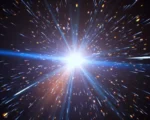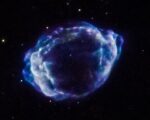Recent astronomical discoveries have revealed that the universe may be home to far more feeding supermassive black holes than scientists had originally thought. These enormous black holes, which range in mass from millions to billions of times that of our Sun, are believed to be hidden behind dense clouds of gas and dust. This cosmic veil prevents traditional telescopes from detecting their activity, which typically involves the black hole pulling in matter, emitting vast amounts of radiation in the process. Researchers now estimate that nearly 30 to 50 percent of these actively feeding supermassive black holes could be obscured by such material, remaining undetected in many parts of the universe.
The newly uncovered information challenges previous models of black hole distribution and activity. Astronomers have long known that supermassive black holes reside at the centers of most large galaxies, but the idea that so many of these black holes remain hidden adds a layer of complexity to our understanding of the cosmos. The gas and dust that conceal these cosmic giants act as a sort of cloak, making it difficult for traditional observatories, which rely on visible light or other electromagnetic radiation, to capture any signs of their existence or the intense energy they emit as they feed on surrounding material.
Scientists have made these groundbreaking observations by employing more advanced techniques and newer types of telescopes that can see beyond the optical spectrum. Instruments capable of detecting X-rays, infrared radiation, and other wavelengths have helped to reveal the true extent of these hidden black holes. For example, some of the most recent observations from the James Webb Space Telescope have provided crucial insights into the obscured regions of space, allowing astronomers to peer through the gas and dust and uncover previously invisible black holes that are actively feeding.
This discovery is reshaping how researchers approach the study of supermassive black holes and their role in galaxy formation and evolution. By identifying and understanding the vast number of these unseen black holes, scientists can refine models of galactic evolution and improve our understanding of the forces at play in the most distant corners of the universe. As new technologies continue to evolve, more of these elusive cosmic entities may soon come into view, offering even greater insights into the most mysterious objects in the universe.


















